This post may contain affiliate links. Please read our disclosure policy.
How to make cashew butter with ONE ingredient (raw or roasted cashews), an oven, & food processor/blender in under 30 minutes. Oil-free, paleo, whole30, vegan!
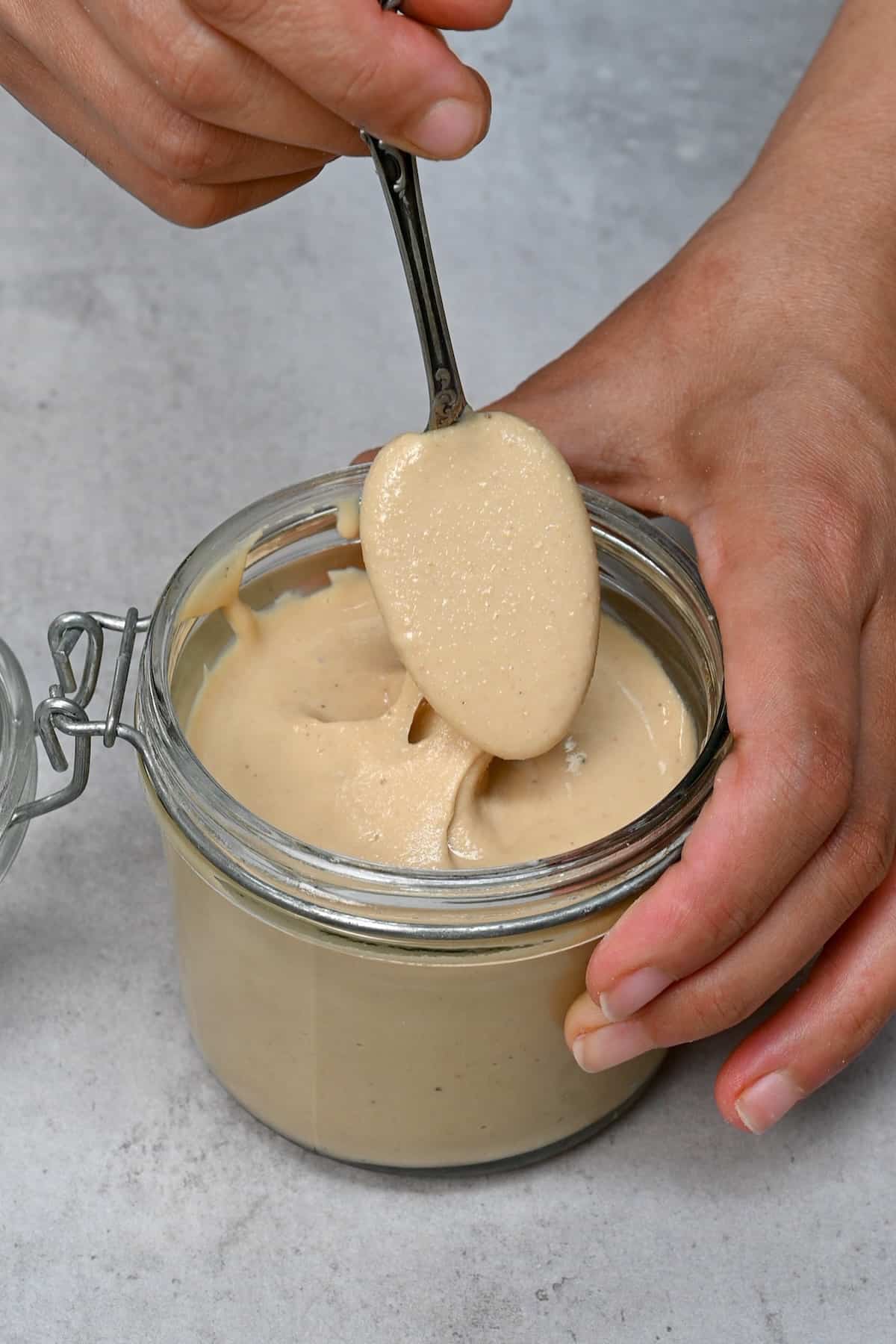
While I’ve shared recipes for most nut and seed butters, like almond butter and peanut butter, this ONE-ingredient homemade cashew butter is a staple in my kitchen at all times. It’s rich and creamy, only requires ONE ingredient, and blends even easier than most other nuts.
Plus, by learning how to make cashew butter at home, it’s more affordable, easily adaptable (keep reading for delicious flavored cashew butter recipes), and you’re 100% in control of the ingredients. So no added salt, sugar, or refined oils unless you want them there!
Want to save this recipe?
Cashew butter ingredients
At its most basic, homemade cashew butter only require ONE ingredient.
- Cashews: It’s best to use fresh, raw, unsalted cashews then toast them yourself to bring out their natural oils.
- Salt: While optional, a pinch of salt will enhance the overall flavor. It also works as a natural preservative.
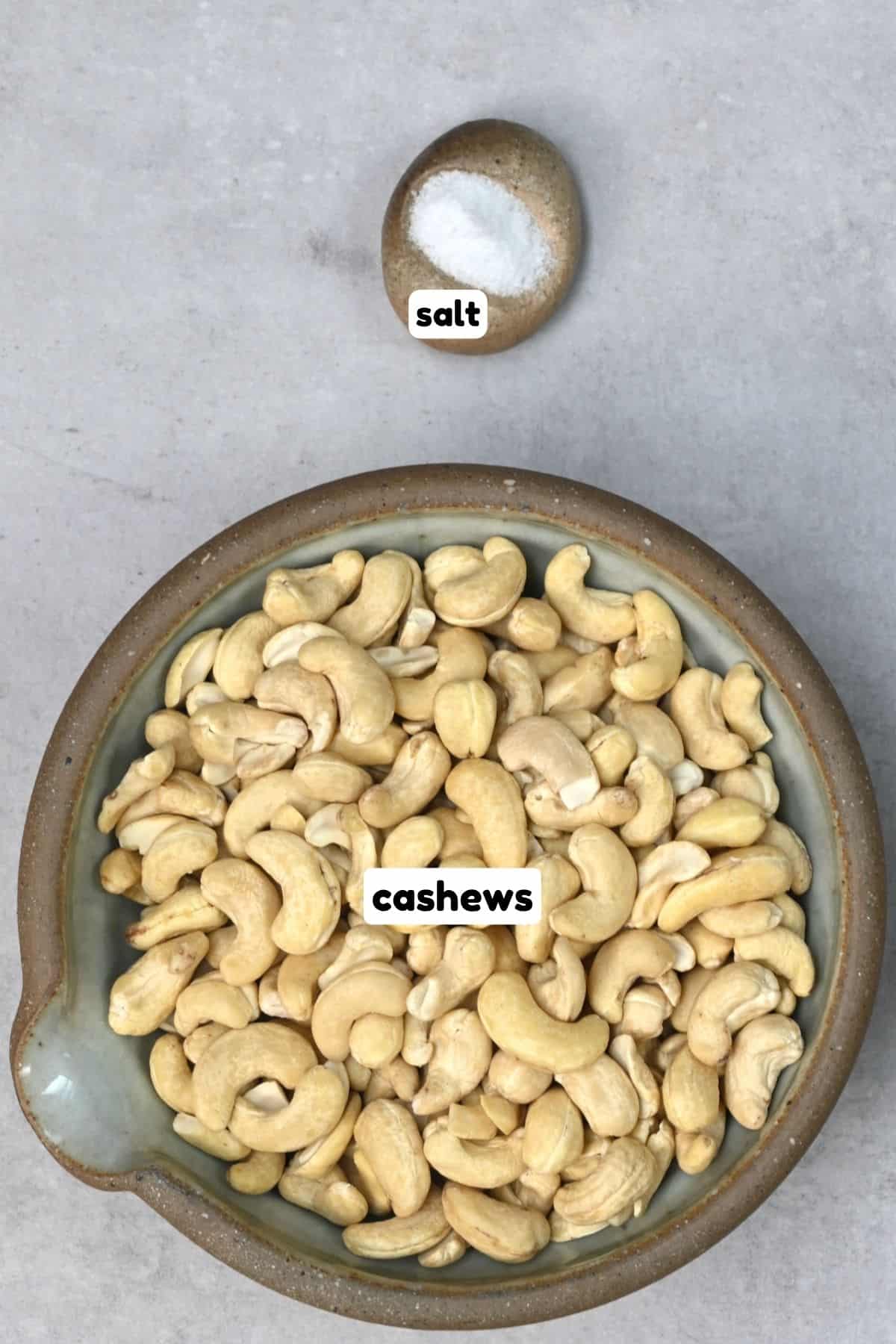
Chef’s Tip: 2 cups cashews make approximately 1 cup cashew butter. Use 3 cups of cashews to make a similar amount to a supermarket jar of cashew butter (about 16 oz).
How to make cashew butter
Keep reading for how to make regular or raw cashew butter in just 1-2 simple steps.
Roast cashews
Roasting cashews is totally optional, but I like to do this step because it enhances the flavor, and helps the cashews release their natural oils (without the need to add any other oils), which makes blending easier and the butter creamy.
Spread the raw cashews in a single layer across a large baking sheet and roast them in a preheated oven at 330ºF/165ºC for 10-15 minutes until golden and fragrant.
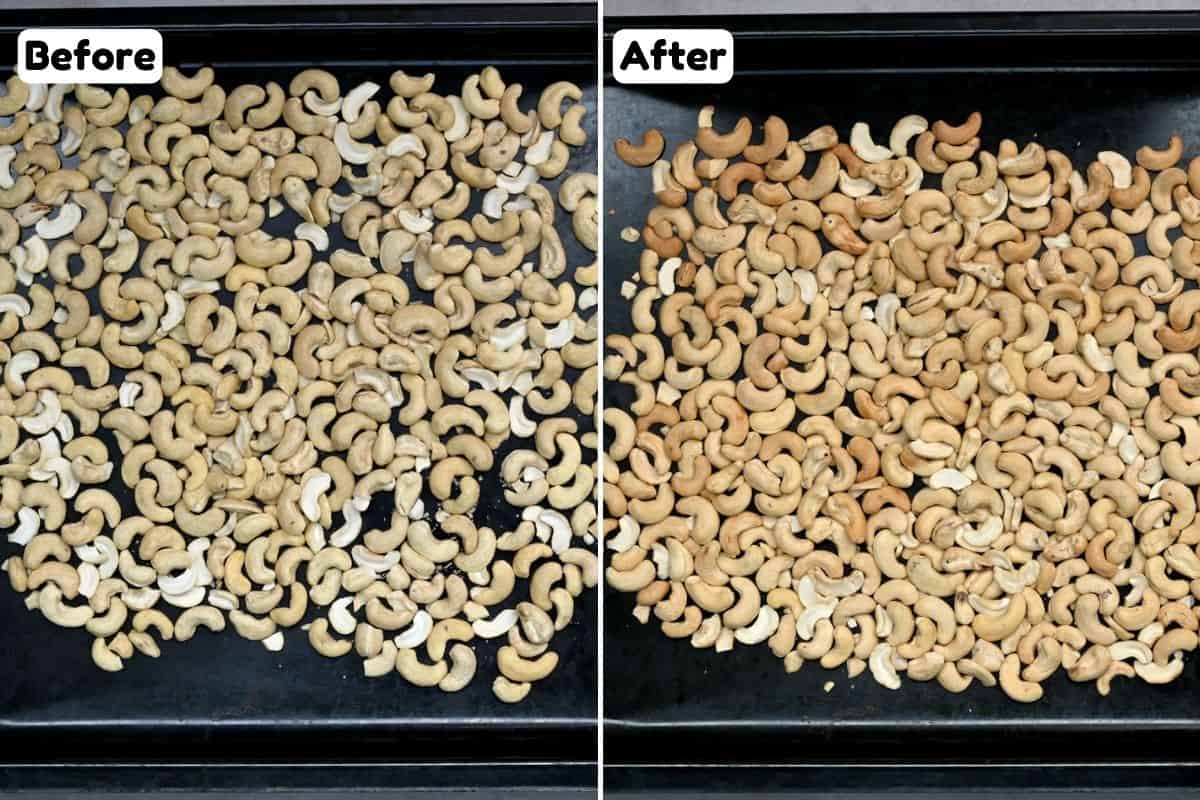
Then, remove the tray from the oven and allow them to cool for 10 minutes.
Blend the cashews
Transfer the roasted cashews to your food processor/blender and blend until smooth and creamy, pausing the machine every 2 minutes to scrape down the sides and give the machine a break (to avoid overheating).
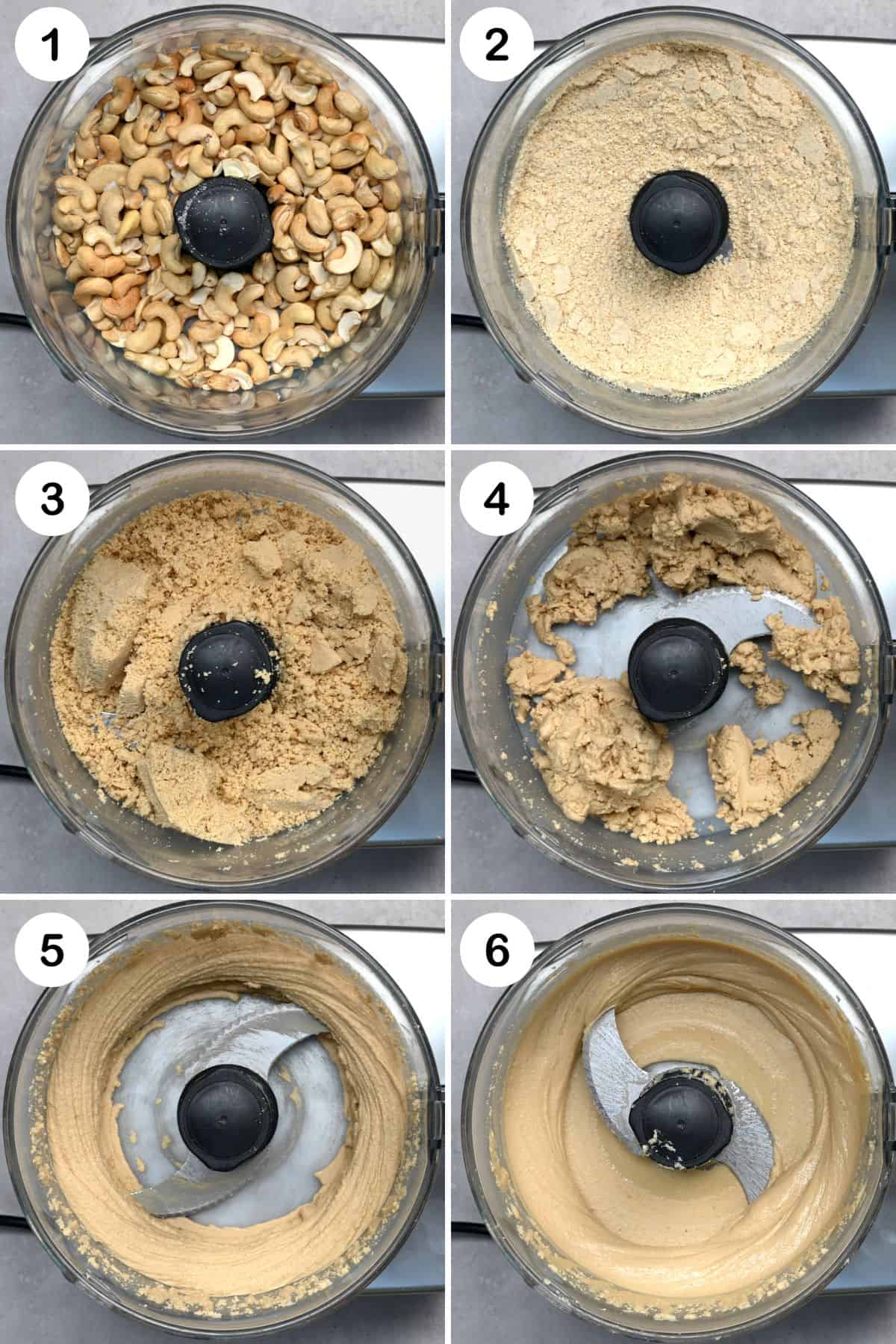
While blending, the nuts go through several stages: chunky, fine meal, thickening as the oils release to form a ball, thick paste, and finally, smooth creamy cashew butter.
The time it takes depends on the machine, cashews, and your desired consistency. 12-15 minutes (machine breaks included) yields super smooth homemade cashew butter.
Once you’ve reached the desired consistency, add any optional ingredients for flavored cashew butter, use it, or transfer it to an airtight jar.
For crunchy cashew butter: Pulse ¼-⅓ cup cashews into a crumb, remove them from the machine then fold them back into the blended cashew butter for crunchy texture.
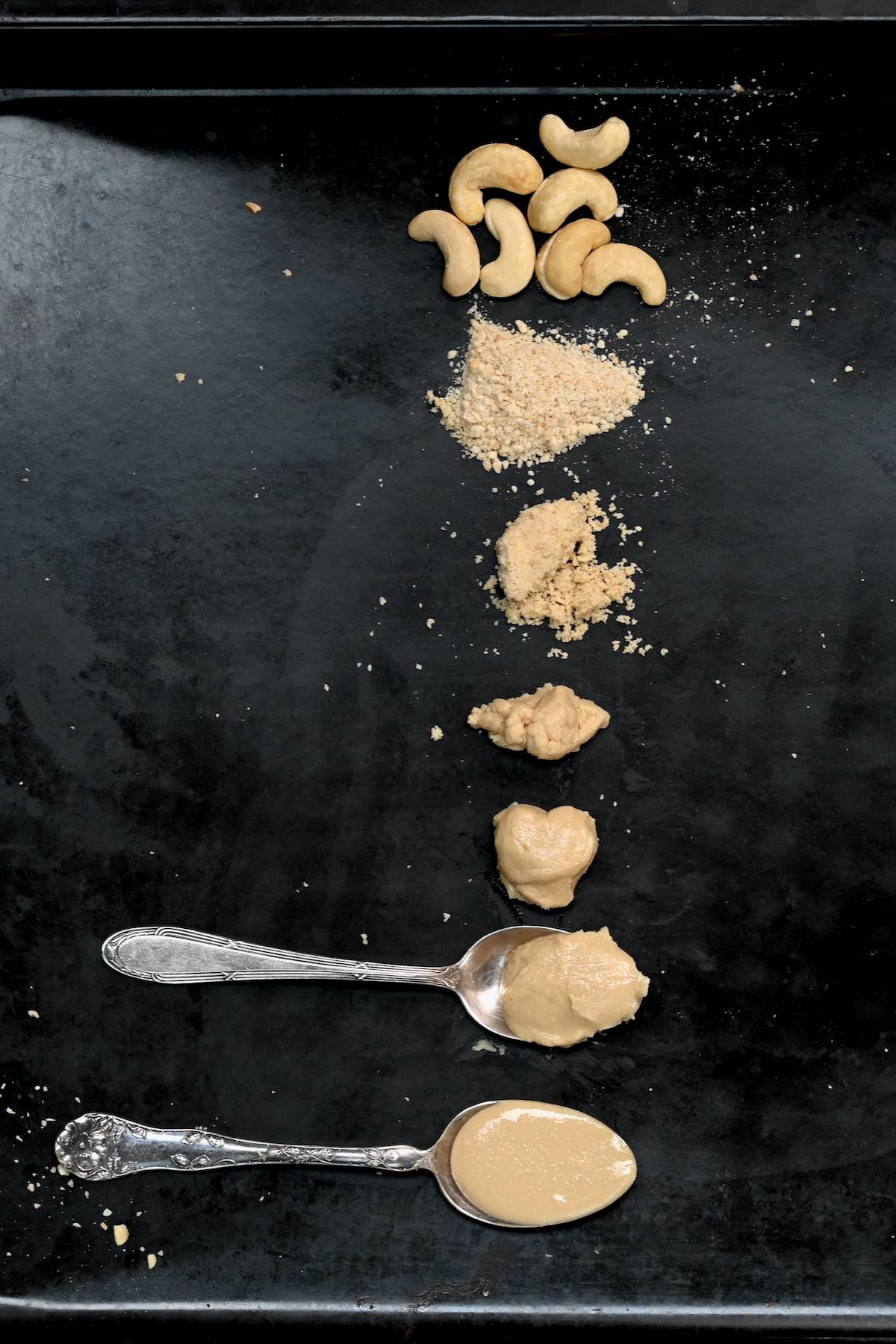
Raw cashew butter
Skip the roasting step and go straight to blending them in a high-powered blender. If the nuts won’t pass the powder/ball stage even after several minutes, add 1-2 tablespoons of oil (like coconut oil) to help the nuts blend.
How to flavor cashew butter?
Like any homemade nut butter, there are plenty of ways to adapt this recipe.
- Sweetener: There are several ways to sweeten your homemade butter.
- Granulated sugar (white, brown, coconut sugar, date sugar, etc.),
- Date paste,
- Sweetener (monk fruit or erythritol).
Use liquid sweeteners (agave, maple syrup, honey) with caution, as they can cause the butter to seize if temperatures vary. Using maple/honey roasted cashews would work.
- Vanilla: Add homemade vanilla extract or vanilla powder.
- Chocolate cashew butter: Add 2-4 tbsp cocoa powder + sweetener + pinch of salt. To enhance the chocolate flavor, add 1 tsp coffee powder. If it’s too thick, add 1 Tbsp oil.
- Spiced Butter: Add 2/3-1 tsp of cinnamon, chai spice, or pumpkin spice + sweetener + vanilla (optional). Maple cinnamon is a lovely combination!
- Espresso Cashew butter: Similar to how this coffee peanut butter spread is made.
- Coconut: Add shredded coconut + optionally 1-2 spoons of coconut butter.
- Strawberry cashew butter: Add ½ cup (increase to taste) powdered freeze-dried strawberries + vanilla + sweetener. You may need oil to thin it.
- Cookie dough cashew butter: Add maple syrup + vanilla powder + chocolate chips/chunks.
Add any flavorings after the butter is creamy and smooth, and aim to use flavored butter within a couple of weeks.
How long does homemade cashew butter last?
Store: Store it in the refrigerator for 6-8 weeks (sometimes longer), using clean utensils in the jar each time you use it.
It’s normal for the butter to separate (oils on top, solids beneath), so stir between uses.
Freeze: Transfer the butter to a freezer-safe container and freeze up to 6 months.
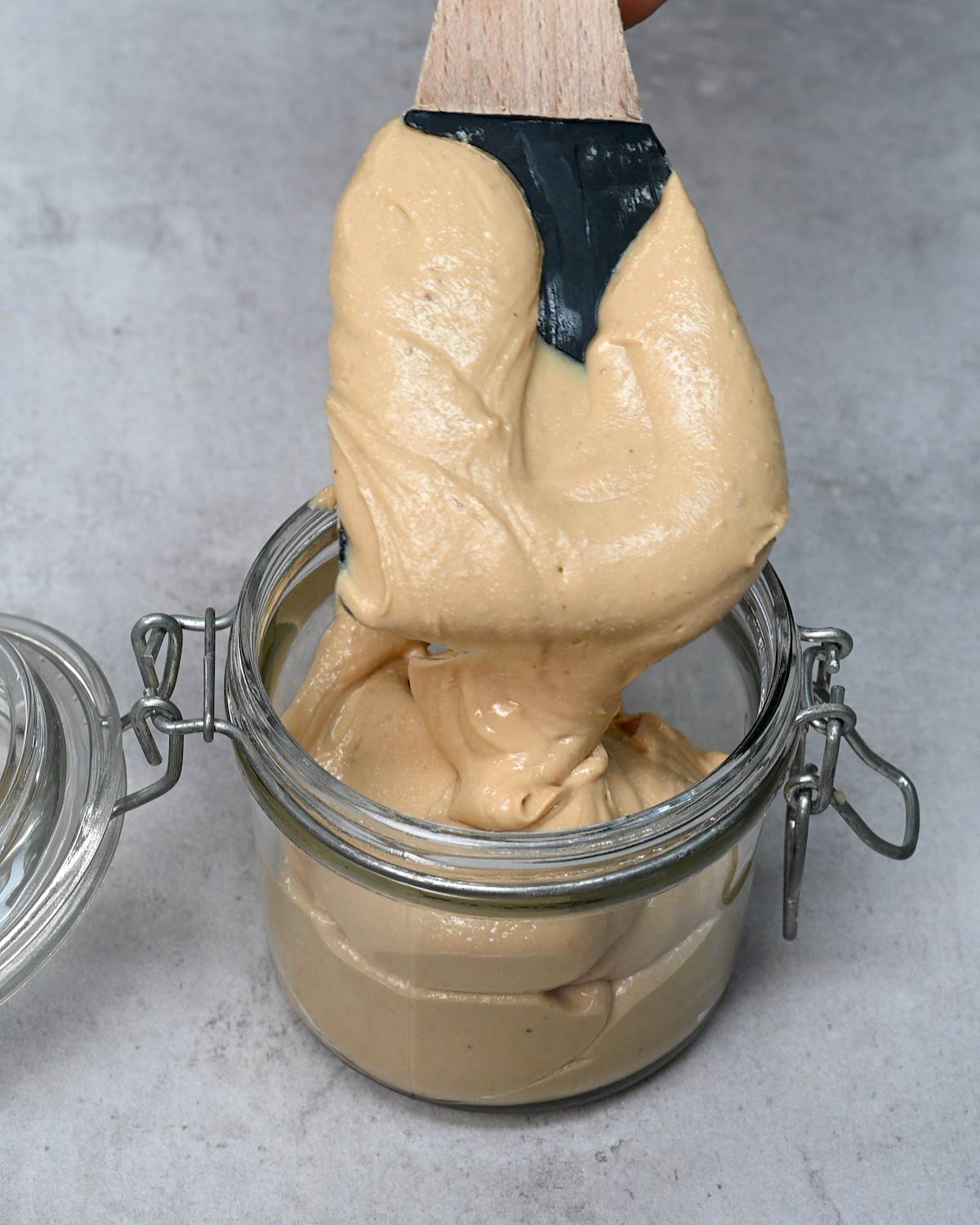
Top tips
- Patience is key: Depending on your processor/blender, the process can take as little as 5 minutes, up to 20. Remember to give your machine breaks every 1-2 minutes to prevent it overheating. Scrape down the side of the bowls at the same time.
- If it won’t blend smoothly: The fat content and soft texture of cashews generally make them easier to blend than other nuts. However, if you’re having issues, let the machine run for several minutes (to make sure it isn’t just slow). If there’s no luck, add a spoonful of neutral oil like avocado oil, coconut oil, or almond oil.
- For the best flavor: Use high-quality raw cashews and roast them yourself before processing. Allow them to cool before blending.
- Quick cashew milk hack: Need cashew milk in a pinch? Blend ONE tablespoon of cashew butter with ONE cup of water for cashew milk in just seconds.
How to use cashew butter?
Cashew butter uses are practically endless – here are just a few of my favorites.
- Over bread – like regular toast, bagels, simit, etc.
- Over banana bread and other quick breads.
- In a PB&J sandwich.
- In place of tahini within hummus.
- With oatmeal or overnight oats.
- Mix into smoothies and smoothie bowls.
- Delicious protein bars, granola bars, fat balls/ energy balls.
- Use it to stuff dates.
- Add to sauces – dressings, drizzles, and dipping sauces.
- To dip apples and other fruits.
- As a base for vegan cheese sauce.
Homemade cashew butter is also fantastic for adding to homemade baked goods, including cookies, brownies, cakes, baked vegan cheesecakes, frosting, and more.
Other nut butter recipes
If you try this homemade cashew butter recipe, let me know how it goes in the comments below. I’d appreciate a recipe card rating and would love to see your recipe recreations – tag me on Instagram @Alphafoodie!
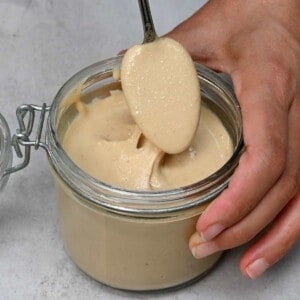
Easy Homemade Cashew Butter
Equipment
- Food Processor or blender
Ingredients
- 14 oz cashews raw, 3 cups
This will yield about 1.5 cup of butter
Instructions
Roast the cashews
- Spread the raw cashews in a single layer across a large baking sheet and roast them in a preheated oven at 330ºF/165ºC for 10-15 minutes until golden and fragrant.
- Remove the tray from the oven and allow them to cool for 10 minutes.
Blend the cashews
- Transfer the roasted cashews to your food processor/blender and blend until smooth and creamy, pausing the machine every 2 minutes to scrape down the sides and give the machine a break (to avoid overheating).While blending, the nuts go through several stages: chunky, fine meal, thickening as the oils release to form a ball, thick paste, and finally, smooth creamy cashew butter.The time it takes depends on the machine, cashews, and your desired consistency. 12-15 minutes (machine breaks included) yields super smooth homemade cashew butter.
- Once you've reached the desired consistency, add any optional ingredients for flavored cashew butter, use it right away, or transfer it to an airtight jar.
For raw cashew butter
- Skip the roasting step and go straight to blending them in a high-powered blender. If the nuts won't pass the powder/ball stage even after several minutes, add 1-2 tablespoons of oil (like coconut oil) to help the nuts blend.
Video
Notes
- For crunchy cashew butter: Pulse ¼-1/3 cup cashews into a crumb, remove them from the machine, then fold them back into the blended cashew butter for a crunchy texture.
- Patience is key: Depending on your processor/blender, the process can take as little as 5 minutes, up to 20 (or more!). Remember to give your machine breaks every 1-2 minutes to prevent it overheating. Scrape down the side of the bowl at the same time.
- If it won’t blend smoothly: The higher fat content of cashews generally makes them easier to blend than other nuts. However, if you’re having issues, let the machine run for several minutes (to make sure it isn’t just slow). If there’s no luck, add a spoonful of neutral oil.
- For the best flavor: Use high-quality raw cashews and roast them yourself before processing. Allow them to cool before blending.
- Making flavored cashew butter: Add the flavorings after you blend the butter and aim to use it within 2-3 weeks.
Nutrition
Nutrition information is automatically calculated, so should only be used as an approximation.

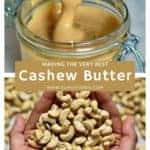
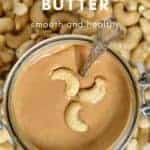
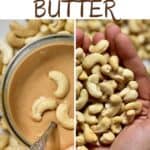
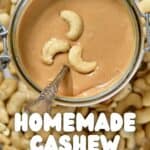
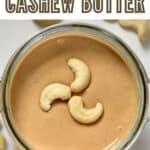
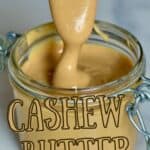
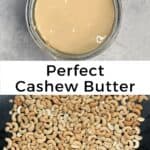
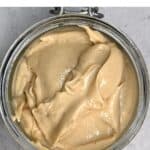
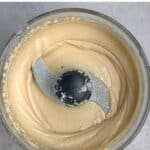









Hello. Your cashew butter looks wonderful. Do you store it in the refrigerator? If so, is it still spreadable?
I would love make it without oil. I’ve used a Cuisinart and the new breville and found oil was needed to make it spreadable after being refrigerated. Sunflower oil was the only oil that worked . I wondered if the nutramilk processor would work better?
Hi Deborah! Yes, I usually store it in the fridge. It’s normal for the oils to separate during storage. Before using it, you need to stir it- this will also make it easily spreadable. When making the cashew butter, there’s no need to add oil. I recommend roasting the cashews first, as that will make them easier to blend. I’ve tried with different machines and they all work.
Hi, how long do you dehydrate cashews in the oven? (: Thank you! (:
Hi Vi,
For sprouted cashew butter (soaked cashews), you can dehydrate it in the oven around 50º celsius for 14-18 hours or until dry.